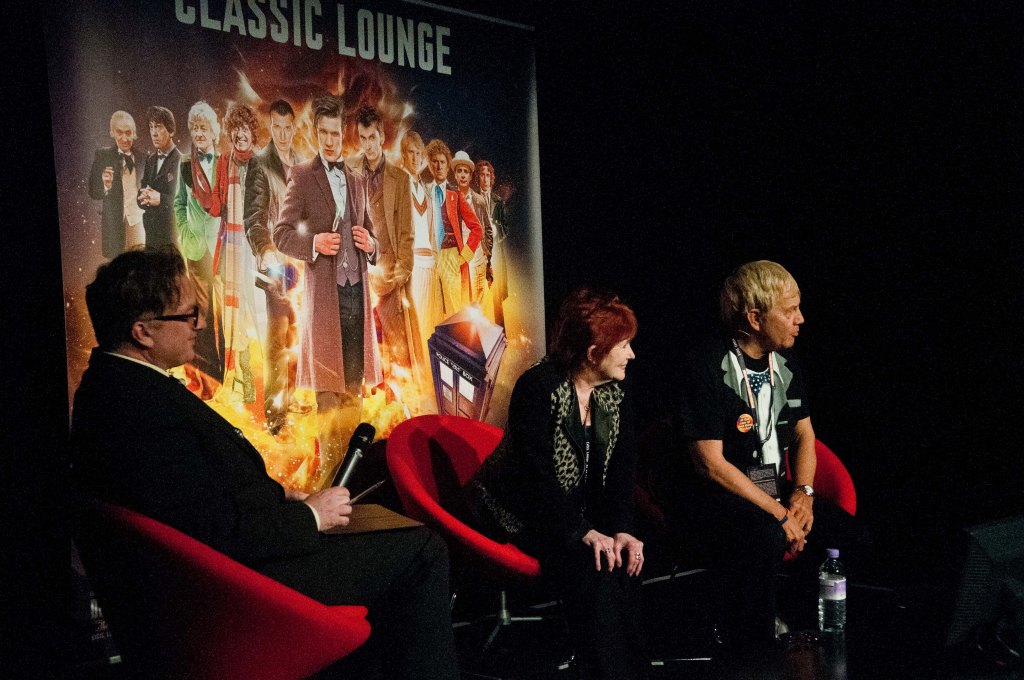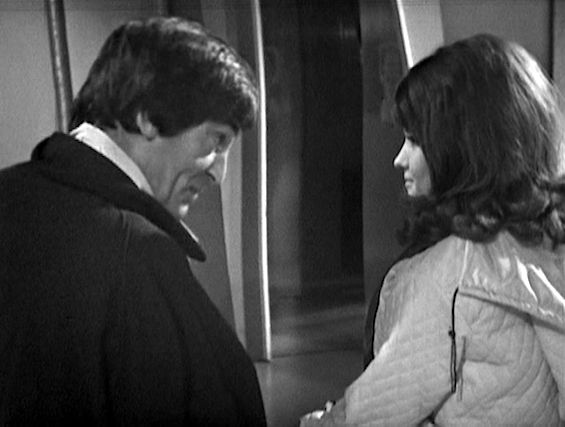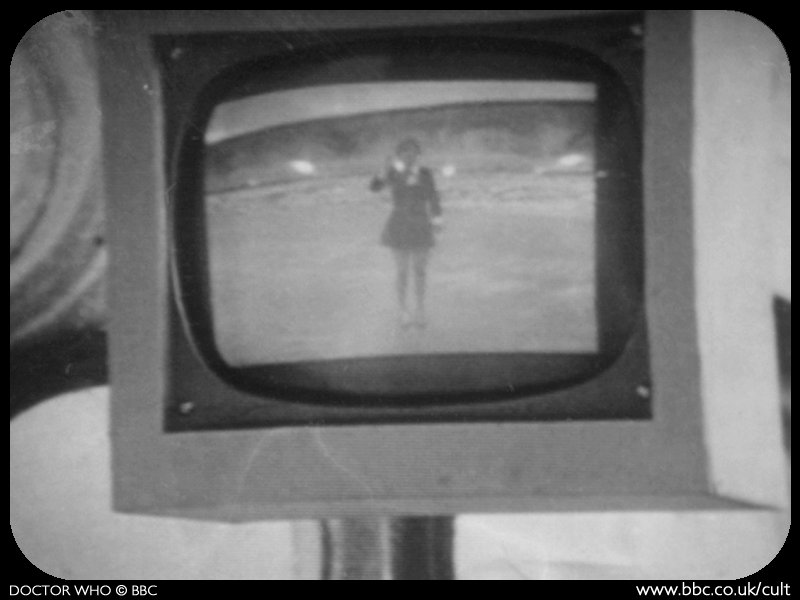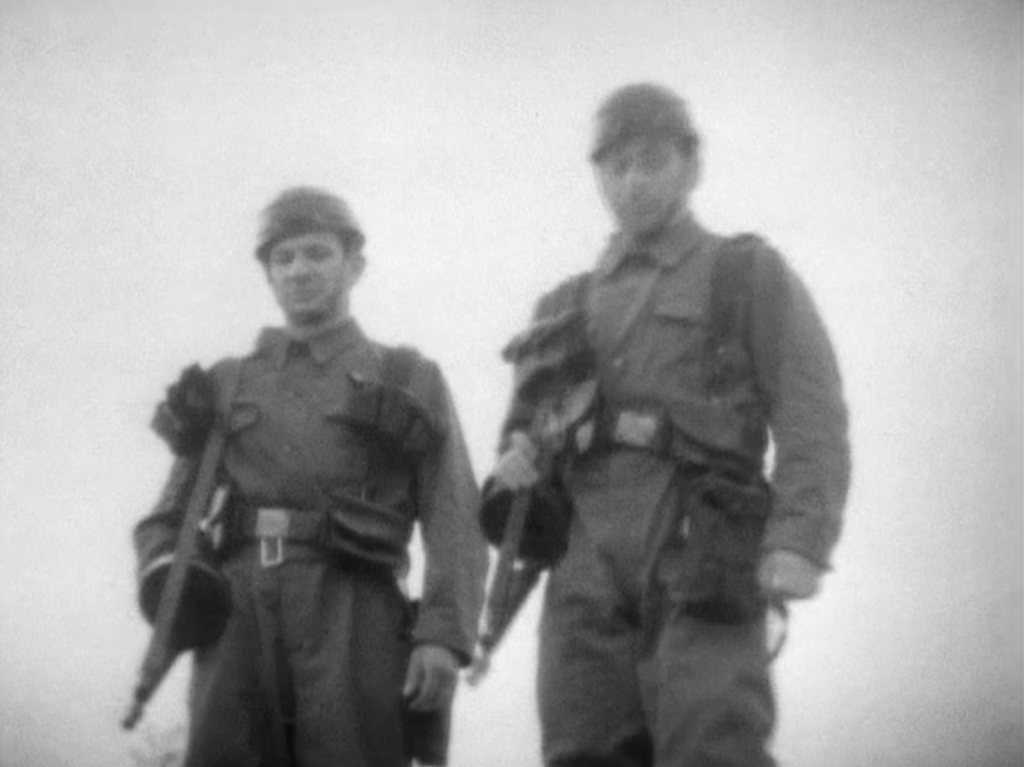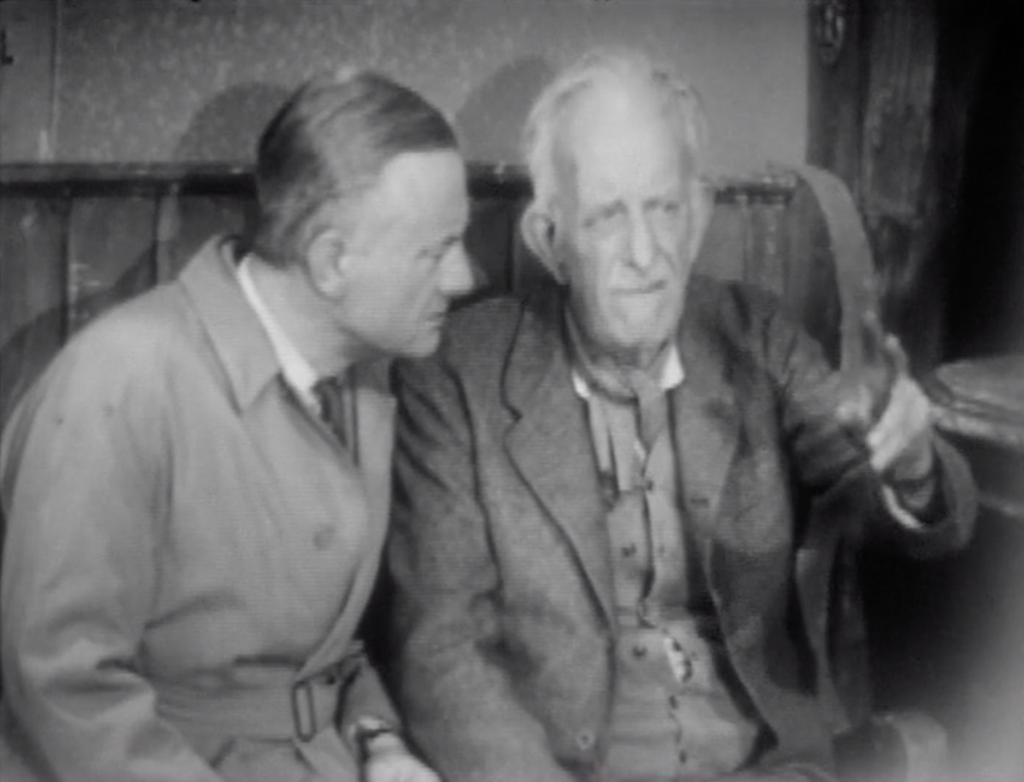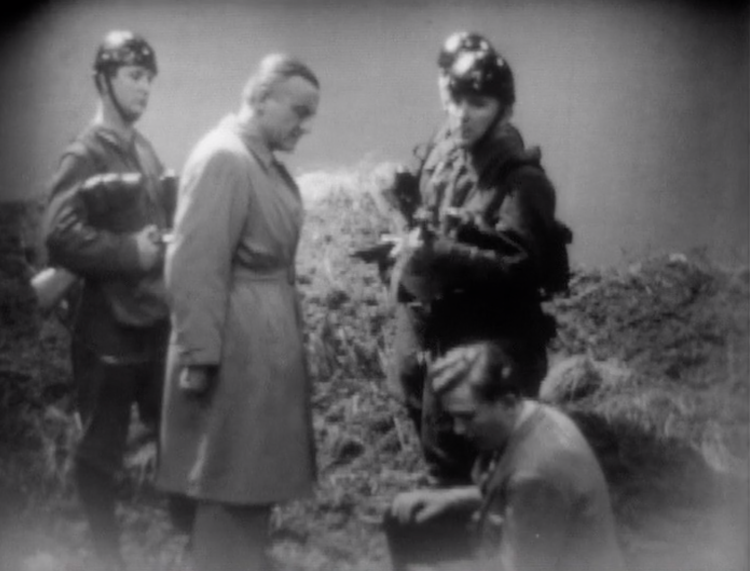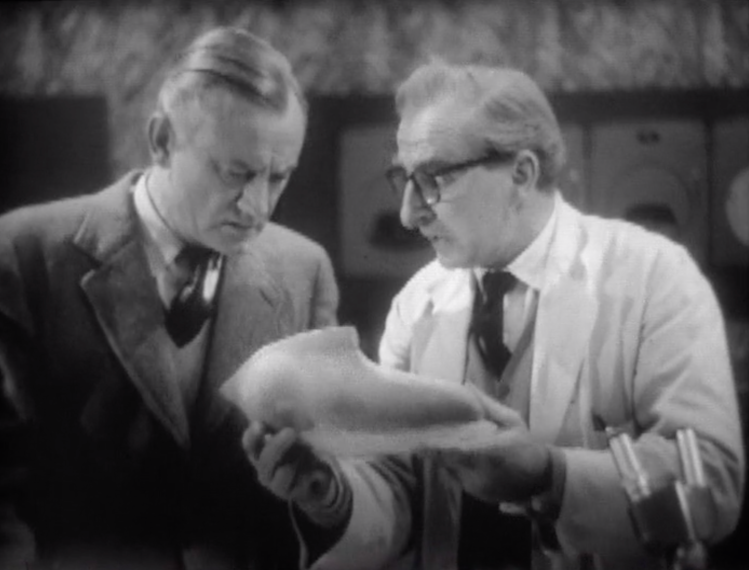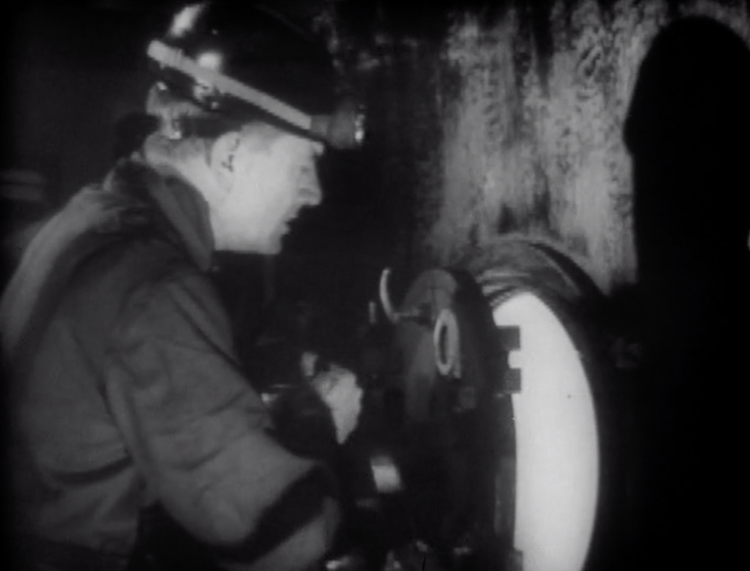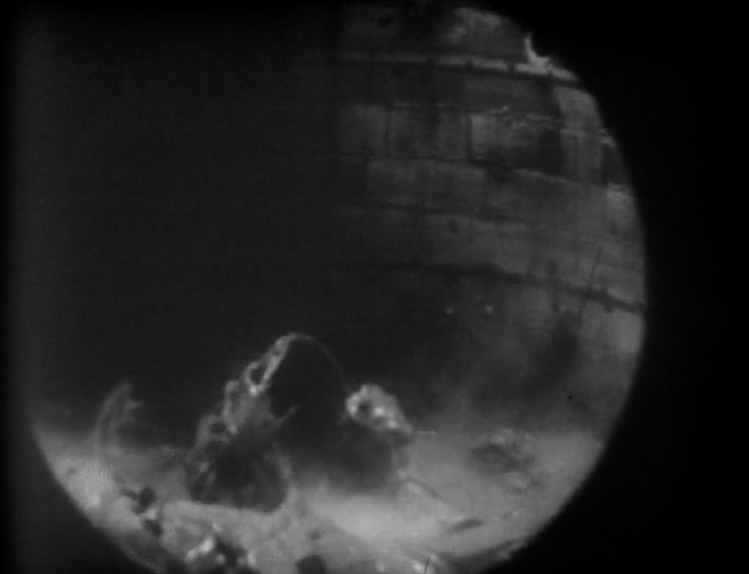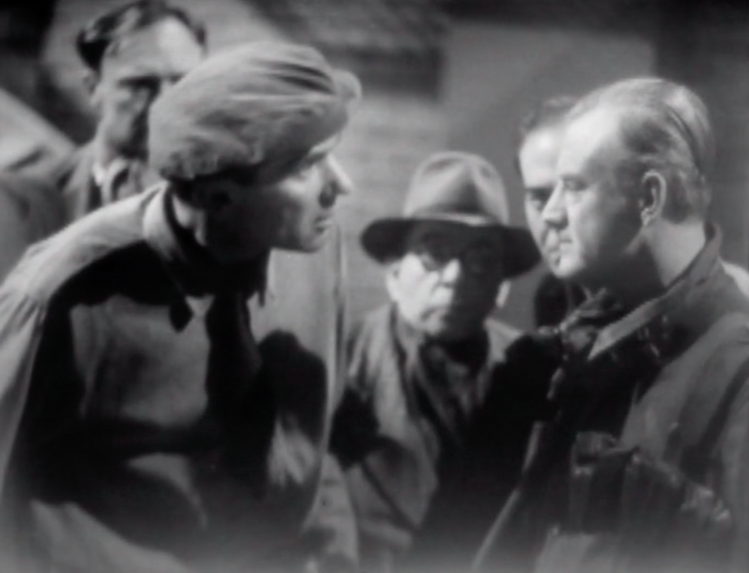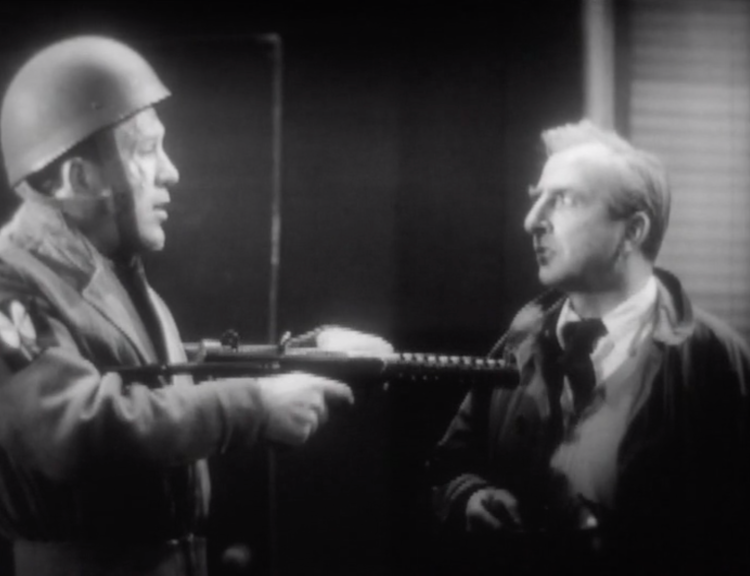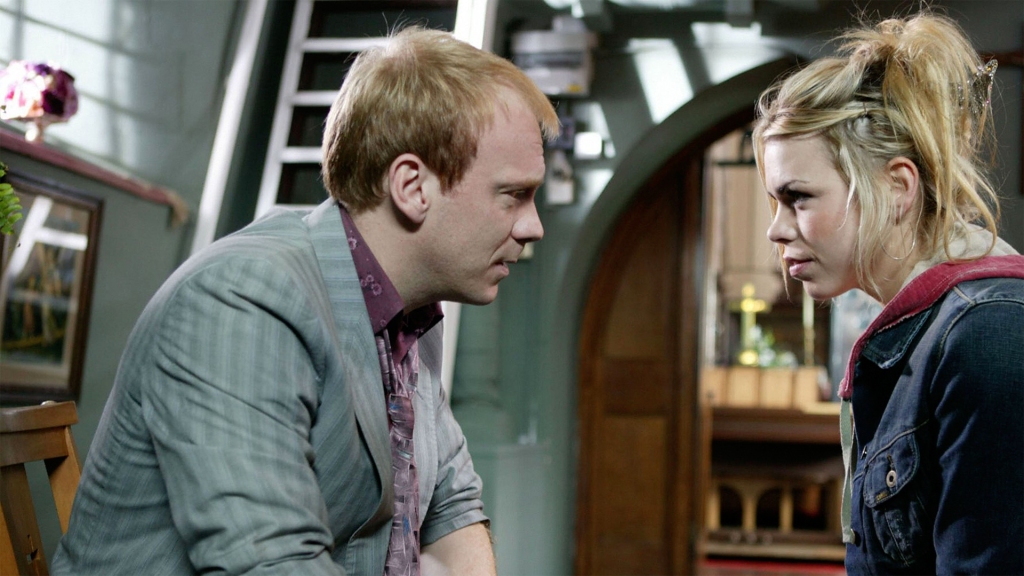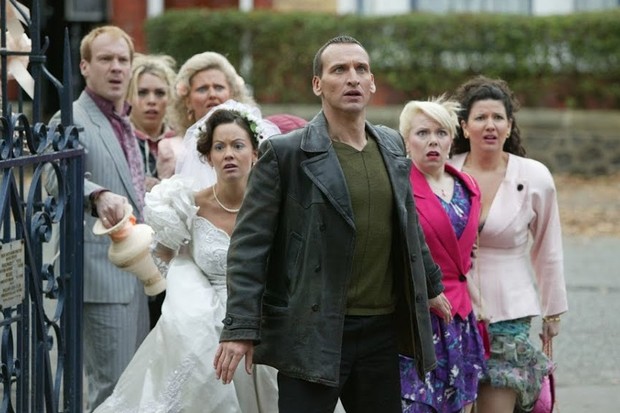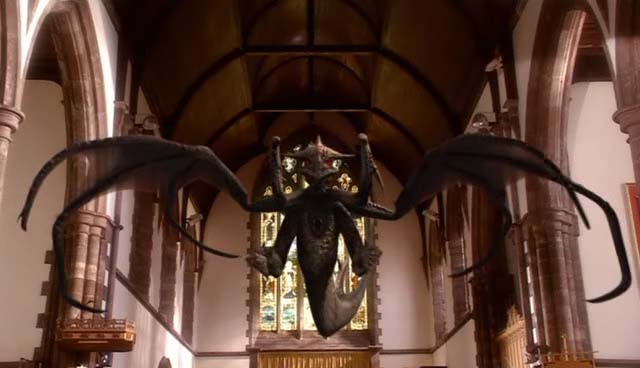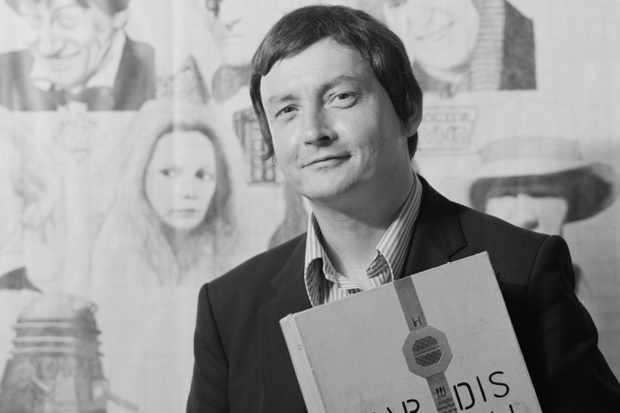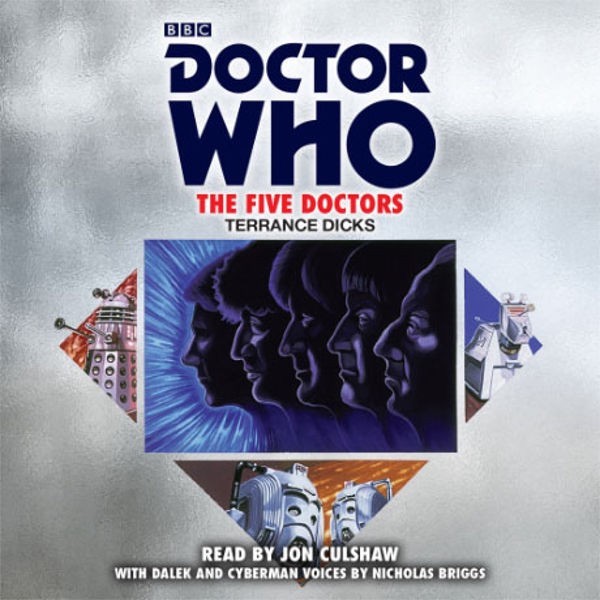
You are monsters. That is the role you seem determined to play. So, it seems I must play mine.
I came into the re-watch of this story with a slight misconception. I had always assumed that the pitch went like this. What if figures from Banksy’s street art came to life and started killing people in Bristol? Not a bad idea at all for a ‘Doctor Who story. I mean that’s a great one-line pitch isn’t it? No? Just me?
It appears that I was slightly wrong and its conception was actually a bit more interesting, involving influences and concepts as diverse as Hans Holbein, and Wile E. Coyote. It was rather the concept of 2-D creatures adapting to a 3-D universe, sliding across their victims, snapping their necks and ‘driving’ their bodies that formed the initial pitch. After he had failed multiple times with the previous story ideas he had pitched to Steven Moffat and his predecessor for earlier series, Jamie Mathieson was offered another chance to via Sue Vertue. Between those pitches, he had also gained experience working on other BBC Sci-fi/Fantasy series ‘Being Human’ and ‘Dirk Gently’. For this meeting, Jamie Mathieson came prepared with both ideas and visual images to illustrate them. Previously, Steven Moffat had always asked him the question ‘but where’s the monster?’. This time he had answers for that, even checking them with Toby Hadoke to ensure they hadn’t been used before. ‘Flatline’ followed on from those discussions and on the strength of that he was also asked to develop ’Mummy on the Orient Express’.
Whilst ‘Flatline’ is quite simple concept, it is actually very, very clever in execution. It fits perfectly into a tradition in ‘Doctor Who’ stories going back nearly 50 years at this point in time – of depicting the horror of the other, of possession and body horror, death and destruction in the contemporary and the everyday, the domestic or the high street. I can imagine Barry Letts trying to do this with early CSO, like the hand in ‘Carnival of Monsters‘ or Christopher H Bidmead latching onto the dimensional aspect and the shrinking TARDIS. There is even a hint a hint of ‘Web of Fear‘ – with monsters stalking the dark, underground tunnels and the Doctor using the public address system. Oh and Robert Holmes would have loved the idea of the boneless, snapping their victims necks and possessing their bodies. It is firmly in the tradition of ‘Tea time terror for tots’.
So, as with ‘Mummy on the Orient Express’, despite being very modern and bedded in the contemporary, this also feels very traditional at the same time. It is often very scary and very, very funny, often in a quite a surprisingly cartoonish way and it sometimes manages to be both at the same time. He is a rare talent Jamie Mathieson and it won’t come as any surprise to learn that I absolutely love this.
Adventures in two dimensions
As I have already hinted, there are an eclectic set of inspirations for this story. One of the main images Mathieson presented to Steven Moffat, was the anamorphic skull from Hans Holbein’s painting ‘The Ambassadors’, which is on display at the National Gallery. When viewed from high right or low left, the stretched image at the front of the painting reveals itself to be a skull. This technique is used in a number of places across the story, including the opening scene when the camera changes perspective to reveal the remains of the victim of an attack by ‘The Boneless’.



In a similar vein (no pun intended!), the images of the human nervous system used in the story, look rather influenced by the anatomical drawings Vesalius or Leonardo.
And when I say eclectic sources of inspiration, I really do mean eclectic. As another key influence were the adventures of Roadrunner and Wil E Coyote. We see this in the finished story in moments where door handles flatten or images of doors are painted on a wall to imply perspective or the train smeared against the tunnel wall. Much of the humour comes from these moments and the glorious scenes of Capaldi in the shrunken TARDIS.
Another reference point given, was the brilliant Sapphire & Steel Assignment IV, where children step out of old sepia photographs which like this story is replete with memorable images, not least it’s blank-faced protagonist.. And there are also a couple of literary influences – the children’s book ‘Flat Stanley’ (by Jeff Brown 1964), about the adventures of a child who has been accidentally flattened (hence the character named Stan) and lives as a 2-D person in a 3-D world and also ‘Flatland: A romance of Many Dimension’ (by Edwin Abbot 1884), which is an early representation of people living in a 2-D or 1-D world.
Of course, something similar had also been done in ‘Doctor Who’ before – in ‘Fear Her from series 2, where Chloe Webber captures her neighbours as drawings and when a 3-D scribble monster comes to life from a 2-d drawing for example. However, this feels rather different to that in content, style and execution. Whilst the earlier story isn’t as bad as some would have you believe, ‘Flatline’ is also much more successful in scripting and execution.
Next. In part two I will look at Clara’s role in all of this, of how a little local knowledge goes a long way and how to live life in 2 dimensions.
Why, Doctor Oswald, you are hilarious.

Rule number one of being the Doctor. Use your enemy’s power against them.
Another plus for ‘Flatline’, is that it is a very good story for Clara. It isn’t so much a Doctor-lite episode, as we get plenty of prime Peter Capaldi in this, instead it rather cleverly separates the pair, moving him into a guiding and consulting role from his rather reduced circumstances, trapped within the TARDIS. This opens the story up for Clara to take a lead, but also gives some great material to Capaldi, actually some of the best for the season.
As with ‘Mummy on the Orient Express’, Clara is largely released from the baggage of main arc this season. Rather, I should say that this is really the start of another arc, one which will be picked up in series 9. She does brilliantly in this – learning to stand in for the Doctor, putting into practice what she knows of his techniques, how he manages the crowd and assumes leadership and even cleverly traps ‘The Boneless’ in a downfall of their own making. However, in hindsight now, we know that this will eventually be the cause of her own downfall in ‘Face the Raven’. In series 9, she becomes overconfident and reckless and starts to love the life and the role a little bit too much.
Here, she investigates the disappearances, keeps Rigsy on side and pulls together the rather ragged, disparate collection of individuals of the community payback group. With the Doctor and TARDIS denied to her – she even provides the method of defeating the Boneless, getting Rigsy to paint a door handle on the wall in front of the shrunken TARDIS. She is rather magnificent in this and I would have liked much more of this across series 8. One scene that I especially love, is her and Rigsy swinging on the seat suspended from the ceiling, as the room melts around them. All whilst taking a call from Danny – who comments that it sounds ‘active’! Actually, that scene mimics a game that we played as children – crossing the room without touching the ground and is very much typical of how the Moffat era often reflects childhood. More than the role of the Doctor though, stylistically she more assumes a role similar to the ‘X-Files‘ Agent Scully role, investigating the alien and bizarre in an assured way and pretending to be from the security services.
Local Knowledge

Do you know, I think that you were wrong about this lad. I think that he could be very useful. Vital local knowledge. So try not to scare him off
And Clara gets to have a companion in all of this – Rigsy, a clever capable lad, who we immediately like. He immediately stands out in the group as brighter (how could he not?) and his compassion immediately shows as he assumes that Clara has lost a loved one. Of course, as ever, this Doctor takes an instant dislike to him, before realising how useful he could be and immediately changing course, that doesn’t often happen! Amongst the action there isn’t too much room to develop Rigsy as a character, however he seems to want his own redemption, to be seen to be doing good – his own community payback. He was prepared to sacrifice himself to save everyone else. Only Clara saves him from that, but in the end, it is his skill as an artist and his knowledge of the underground tunnel network that ultimately saves them all. It is a lovely performance by Jovian Wade, who I hope goes on to have a successful career, we would at least get to see him once again in the show in ‘Face the Raven’.
File under imagination, lack of…

It takes quite a lack of imagination to beat psychic paper.
Pitted against the free spirited and youthful Rigsy, we have a charmless, pathetic excuse of a human, his adversary, Fenton. Played brilliantly by the cadaverous Christopher Fairbanks, who is probably best known for ‘Auf Wiedersehen Pet’. He is one of a line of unpleasant, selfish, nasty little people who survive while all of those better than them die. Think Rickston in ‘Voyage of the Damned’ or Robertson in ‘Arachnids in the UK’. As with those examples, the experience of all this leaves him utterly unchanged at the end (‘They were Community Payback scumbags, I wouldn’t lose any sleep.’). He is summed up by the fact that he lacks even the imagination to be fooled by the psychic paper. He voted for Brexit, for UKIP and then Johnson and he’s really enjoyed lockdown.
Living in 2 dimensions
At the heart of all this though, there are two brilliant, largely visual aspects of this story – the shrinking TARDIS and the 2-D creatures becoming 3-D– The Boneless.

Out of the former, we get the comedy of Peter Capaldi trying to get out of the doors of the half-sized police box, Clara carrying the TARDIS around in her handbag and the best of all, the shrunken police box on the railway line. The latter is a scene that manages both be simultaneously very tense and very funny. Echoing ‘The Addams Family’, but with more than a hint of Looney Tunes or Hannah-Barbera as well, as the Doctor’s hand emerges from the TARDIS doors and tries, Hermit Crab-like to scuttle away from the oncoming train.

The main triumph of this story though, is the depiction of the 2-D creatures – ‘The Boneless’, as they attempt to become 3-D. Some of the imagery is genuinely terrifying. The poor WPC being absorbed into the carpet, we see a movement in the wall and floors in the background behind her and she slowly sinks, screaming into the floor. It is the fluid nature of the creature, moving through the walls or the carpet – there is no place of safety.

Then we have the shock moment of the elongated hand that grabs Al in the railway tunnel, which is apparently a Steven Moffat addition.

The army of them faces of the dead worn as flickering masks in the tunnels is probably the scariest that the show has been since the gas mask zombies from ‘The Empty Child’ or the Angels in ‘Blink’. For me the show shouldn’t go too long without being scary and when it is at its zenith it deftly balances those scares with great imagination, action and humour. ‘Flatline’ manages of all of this almost effortlessly.
Despite everything, the Doctor does try unsuccessfully to understand them and their 2-D world – to offer them a lifeline, to open communication, but to little avail:
The impressions we make in two-dimensional space. That was them reaching out, attempting to talk. At which point they moved into flattening and dissection. Trying to understand. Trying to emulate. But here’s the big question. Do they know they’re hurting us?
We’re not calling it a de-flattener.

They’re wearing the dead like camouflage. Whatever they are, they are experimenting. They’re testing. They are, they are dissecting. Trying to understand us.
As the story reaches its conclusion, what we mostly have pitted against the horrific body horror and lurching, flickering zombies, well what we mostly have is some more visual comedy. The scares counteracted by laughs – the train flattened against the tunnel wall, the door handles de-flattened and flattened again. The door that Rigsy paints on the wall that the Boneless try to restore to 3-D, only succeeding in restoring the TARDIS in the process. These are the aspects that feel very ‘Looney Tunes’ – the Doctor’s gang become Roadrunner and the Boneless become Wile E Coyote, about to run off yet another cliff. It is quite the balancing act between the often horrific imagery and the laughs. One which works very well to my mind.
‘The man who stops the monsters’,
Clara and Rigsy might be the main heroes here, however it isn’t their show and so for the ending, back comes the Doctor for a big Paul Cornell style mission statement. Really it is straight out of his Virgin New Adventure playbook – re-purposed for the Steven Moffat era, via the heroic stance, sonic screwdriver aloft, taking centre stage once more and banishing the monsters back to their own world:
‘And I think you just don’t care. And I don’t know whether you are here to invade, infiltrate or just replace us. I don’t suppose it really matters now. You are monsters. That is the role you seem determined to play. So it seems I must play mine. The man that stops the monsters. I’m sending you back to your own dimension. Who knows? Some of you may even survive the trip. And, if you do, remember this. You are not welcome here. This place is protected. I am the Doctor. And I name you The Boneless.‘
“Flatline’ has a real velocity to it, pace and scares and laughs and some interesting core concepts and a nice cast of characters. And it is smart with it. Encompassing the visual arts – painting, street art, animation and film/TV genres from horror, spooky fantasy, cartoon and almost slapstick-level comedy (the flattened door handles and the train feel straight out of Keaton for example). It reminds me rather of a Steven Moffat story in the Russell T Davies era. It isn’t quite as stellar as those, but it is close enough to be a great story in its own right. Similar to something like ‘The Empty Child’, which has similarly great visual ideas and gags (the gas mask zombies, the barrage balloon, the spooky typewriter, the squareness gun etc.), ‘Flatline’ simultaneously feels both new and reassuringly traditional, it maybe lacks some of the depth and range of Steven Moffat’s first story, but it is nonetheless an impressive, assured debut script. The contemporary and traditional, scares and laughs. That is a neat trick to pull off. And very ‘Doctor Who’.

